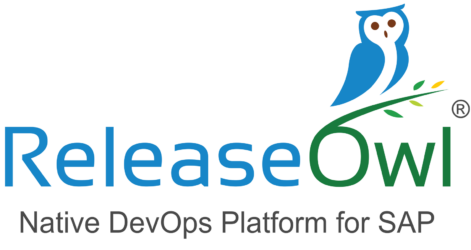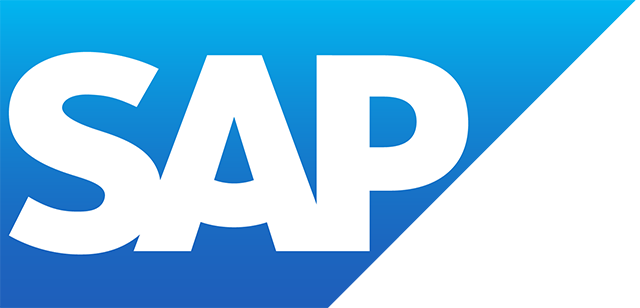SAP Smart Sensing
Filter By
Browse By
- SAP Analytics and AI
- SAP Application Development and Integration
- All SAP Application Development and Integration
- SAP ABAP
- SAP ABAP Development Tools
- SAP ABAP Test Cockpit
- SAP API Management
- SAP BAPI
- SAP Basis
- SAP BRF
- SAP Business Application Studio
- SAP CMS
- SAP Design Studio
- SAP Development Tools
- SAP DevOps
- SAP EAI
- SAP EDI
- SAP Extension Suite
- SAP Fiori
- SAP Fiori Elements
- SAP Integration Suite
- SAP Low Code Application Development
- SAP Low Code Automation
- SAP Netweaver
- SAP Release Management
- SAP UI5
- SAP Web Application Server
- SAP Web IDE
- SAP Business Process Management
- SAP Center of Excellence
- SAP CIO
- SAP Customer Experience
- SAP Data and Data Management
- All SAP Data and Data Management
- SAP BW
- SAP BW/4HANA
- SAP Crystal Reports
- SAP Data Archiving
- SAP Data Center
- SAP Data Governance
- SAP Data Integration
- SAP Data Migration
- SAP Data Quality
- SAP Data Services
- SAP Data Strategy
- SAP Data Visualization
- SAP Data Warehouse Cloud
- SAP DMS
- SAP Document Control
- SAP EIM
- SAP ETL
- SAP ETL Tools
- SAP HANA
- SAP HANA Administration
- SAP HANA Deployment Infrastructure
- SAP HANA Studio
- SAP Master Data
- SAP Master Data Governance
- SAP MDM
- SAP Enterprise Architect
- SAP Enterprise Asset Management
- SAP ERP
- SAP Finance
- All SAP Finance
- SAP Accounting
- SAP AR AP
- SAP Asset Accounting
- SAP Billing Systems
- SAP BPC
- SAP BRIM
- SAP Cash Management
- SAP Central Finance
- SAP Controlling
- SAP COPA
- SAP Cost Center Accounting
- SAP Currency Risk
- SAP e-invoicing
- SAP FICO
- SAP Finance Automation
- SAP Advanced Financial Closing
- SAP Financial Consolidation
- SAP Financial Planning
- SAP FX Risk
- SAP General Ledger
- SAP Global Tax Management
- SAP Hyperion
- SAP Order to Cash
- SAP Payment Processing
- SAP Profitability Analysis
- SAP Rebate Management
- SAP S/4HANA Finance
- SAP SWIFT Compliance
- SAP Treasury Management
- SAP Universal Journal
- SAP Governance Risk and Compliance
- SAP Human Capital Management
- SAP Intelligent Technologies
- SAP Platform and Technology
- All SAP Platform and Technology
- SAP Business Technology Platform
- SAP Cloud
- SAP Cloud Connector
- SAP Cloud Integration Platform
- SAP Cloud Migration
- SAP Cloud Platform
- SAP Cloud Providers
- SAP Cloud Strategy
- SAP Digital Signature
- SAP Container Platform
- SAP HANA Enterprise Cloud
- SAP Digital Asset Management
- SAP Smart Forms
- SAP HEC
- SAP Digital Integration Hub
- SAP Hyperscalers
- SAP Infrastructure
- SAP Messaging
- SAP Quality and Testing
- SAP Security
- SAP Spend Management
- SAP Supply Chain Management
- All SAP Supply Chain Management
- SAP APO
- SAP Asset Management
- SAP Business Network
- SAP Digital Manufacturing Cloud
- SAP Digital Twin
- SAP EWM
- SAP IBP
- SAP Inventory Management
- SAP Label Printing
- SAP Logistics
- SAP Manufacturing
- SAP Manufacturing Automation
- SAP MES
- SAP MII
- SAP MM
- SAP MRO
- SAP MRP
- SAP Order Management
- SAP Plant Maintenance
- SAP PLM
- SAP Production Planning
- SAP S&OP
- SAP SD
- SAP SPM
- SAP Supply Chain Planning
- SAP Track and Trace
- SAP Transportation Management
- SAP System Administration
What Is Smart Sensing?
Sensors have been used in industry for decades to capture specific parameters like temperature. Smart sensors are an evolution of legacy sensors and leverage recent advances in technologies like Internet of Things (IoT) and cloud. Unlike a traditional sensor, a smart sensor can perform advanced tasks such as data conversion, data processing, analytics, and communicating with external devices and the cloud. Many smart sensors can do self-assessment and self-calibration, making them an essential part of digital twins. The data from smart sensors can be leveraged for a plethora of applications, like predictive planning.
What Is Smart Sensing?
Sensors have been used in industry for decades to capture specific parameters like temperature. Smart sensors are an evolution of legacy sensors and leverage recent advances in technologies like Internet of Things (IoT) and cloud. Unlike a traditional sensor, a smart sensor can perform advanced tasks such as data conversion, data processing, analytics, and communicating with external devices and the cloud. Many smart sensors can do self-assessment and self-calibration, making them an essential part of digital twins. The data from smart sensors can be leveraged for a plethora of applications, like predictive planning.
What Is SAP Smart Sensing?
Smart sensing is a capability within the SAP Internet of Things offering that leverages SAP Fiori to identify and track physical objects maintained in SAP S/4HANA. The identification and tracking is done primarily by scanners and smart sensors. Compared to classic IoT scenarios, the SAP smart sensing approach brings the following advantages:
- Tracking of single events rather than recording of continuous data streams significantly reduces the amount of data to process.
- Using auto-ID tags instead of sensors reduces costs.
- Tagging of single items that are part of a delivery or a handling unit allows for a finer granularity and higher precision of the data collected.
While the applications can span multiple functions, a key function that can leverage smart sensing extensively is supply chain. With the help of smart sensors and other technologies like artificial intelligence and machine learning, organizations can build smart, kinetic supply chains, as highlighted in this webinar.
Key Considerations for SAPinsiders
SAP smart sensing is a robust capability to help organizations build components of the intelligent enterprise. However, there are certain key aspects that SAPinsiders need to keep in perspective when embarking on this journey:
Understand the difference between conventional and smart sensors. As mentioned earlier, sensors have been used in industry for a while, but smart sensors take this capability much further. Understanding the “smart” aspect of sensors will allow you to understand where and how to use them.
Think beyond just tracking. While there is no doubt that smart sensors can help track flows or processes in real time, the data often captured by these sensors can be used extensively for generating additional insights. Key advanced analytics approaches like simulation, optimization, and predictive analytics can be leveraged using this data to generate new insights for organizations.
Think end-to-end. A powerful capability of smart sensors is that they can be used to build end-to-end solutions, specifically in process intense functions like supply chains. You can design end-to-end solutions to make your enterprise more resilient and agile.
488 results
-

Bring Real-Time Analytics and Reporting into Your SAP HANA Platform: Q&A on the Benefits of Agile Data Marts
Reading time: 11 mins
Data volume continues to increase among organizations of all sizes and verticals, and many have turned to business intelligence (BI) tools to make the best use of their data. These BI technologies are key to integrating, analyzing, and leveraging all of this data, but for those just starting this process, the question remains — what...…
-

Transition to SAP S/4HANA Finance
Reading time: 11 mins
There are myriad options associated with a transition to SAP S/4HANA Finance, and navigating all the choices can be challenging. It’s important to make sure that you chart your optimal road map to SAP S/4HANA Finance based on the specific needs of your organization. Read the Q&A transcript with Quality Systems & Software’s Mitresh Kundalia...…
-

Best Practices to Streamline Your Supply Chain Labeling from SAP and SAP S/4HANA
Reading time: 12 mins
Thank you for registering for this live Q&A. Find the transcript on supply chain labeling below. Matthew Shea: Hello, and welcome to today’s SAPinsider live Q&A. We will be chatting for the full hour about Enterprise Labeling Solutions and how SAP customers can leverage them to keep up with changing customer demands, comply with regulatory...…
-
-

Optimize Remote Output and Print Management for SAP Systems
Reading time: 9 mins
Matthew Shea: Hello, and thanks for coming to today’s live Q&A on optimizing remote output and print management for SAP systems, particularly the UniSpool solution. I am joined by Goosen de Bruin, Managing Director at Solipsis, Johan Harmsen, Software Architect at Holland House b.v., and Tessa Hofman, Solipsis Group. We are looking forward to a...…
-

- SAP Customer Experience
 Premium
Premium
Fujitsu Untangles Sales Complexities
Reading time: 8 mins
Network Equipment Manufacturer Fujitsu Network Communications wanted to reduce complexity in its configure, price, and quote (CPQ) processes in hopes to provide more accurate proposals. Hear how the company integrated FPX CPQ with SAP ERP to decrease pricing errors by 80%, significantly reduce price quoting cycle times, and gain real-time visibility into pricing updates. Membership…
-

- SAP Cloud Providers
 Premium
Premium
Celanese Finds a Perfect Fit in the IBM Cloud
Reading time: 8 mins
With 40 SAP systems, 213 interfaces, and 30TB of data across development, test, and production environments, Celanese — a specialty materials company based in Texas — knew it needed a way to decrease its annual SAP operational costs. By partnering with IBM and leveraging IBM Cloud Managed Services for SAP, the company was able to…
-

- SAP Process Automation
 Premium
Premium
Whirlpool Corporation Achieves Ultra Clean Business Processes with Automation Software
Reading time: 12 mins
For over a century, Whirlpool Corporation has been manufacturing home appliances. The organization has built up an abundance of different brands and offerings over the years and, in doing so, has also acquired an abundance of data – so much so that the needs for processes for inputting, extracting, and maintaining that data quickly grew.…
-
-

- SAP AR AP
 Premium
Premium
Great-West Financial Establishes Its Mobile Footprint
Reading time: 8 mins
In today’s fast-paced, digital world, employees are more likely to prefer the convenience of a smartphone app than the rigidity of an on-premise one. This was certainly true at Great-West Financial, a life insurance and retirement services provider that hundreds of thousands of customers rely on. Executives and managers could only access their invoice workflows…
-

- SAP SuccessFactors
 Premium
Premium
ATB Financial Banks on Team Members
Reading time: 8 mins
ATB Financial, a financial services organization in Alberta, Canada, prides itself on being an excellent place to work. Its legacy HR system, however, did not provide the agility, efficiency, or self-service functionality necessary for maintaining this goal. With limited transparency for administrators and minimal ownership for employees, the old system needed an update. Discover how…
-

- SAP Process Control
 Premium
Premium
Vodafone Group Dials Up Process Controls
Reading time: 7 mins
As Vodafone Group expanded globally, it required more stringent process controls to ensure the more than 100,000 users who touched their various business processes could act efficiently. The company sought SAP Process Control to automate its process controls and expand the control footprint by process, systems, and geography. Discover how the company was able to…
Become a Member
Unlimited access to thousands of resources for SAP-specific expertise that can only be found here.
Become a Partner
Access exclusive SAP insights, expert marketing strategies, and high-value services including research reports, webinars, and buyers' guides, all designed to boost your campaign ROI by up to 50% within the SAP ecosystem.
Upcoming Events
Related Vendors
Your request has been successfully sent


